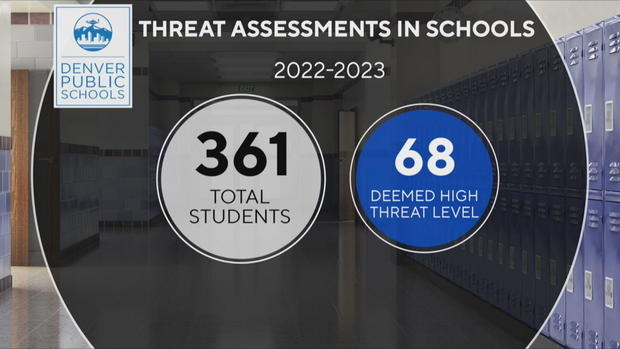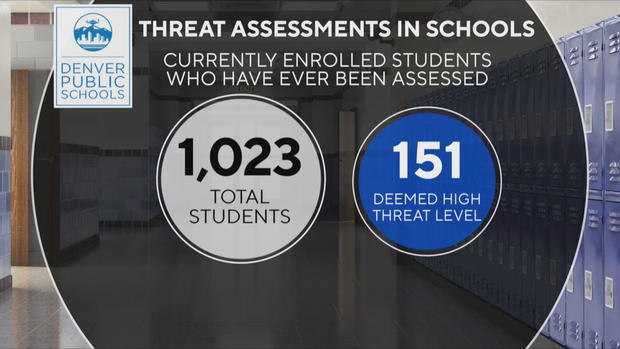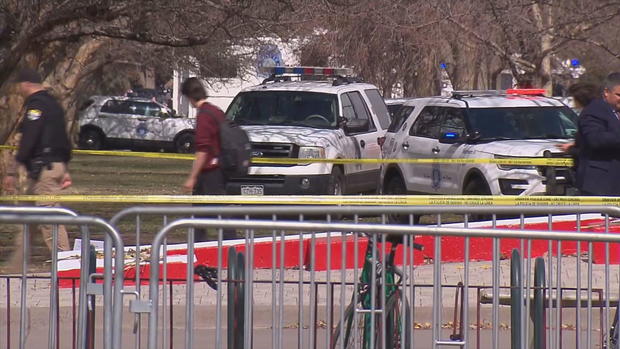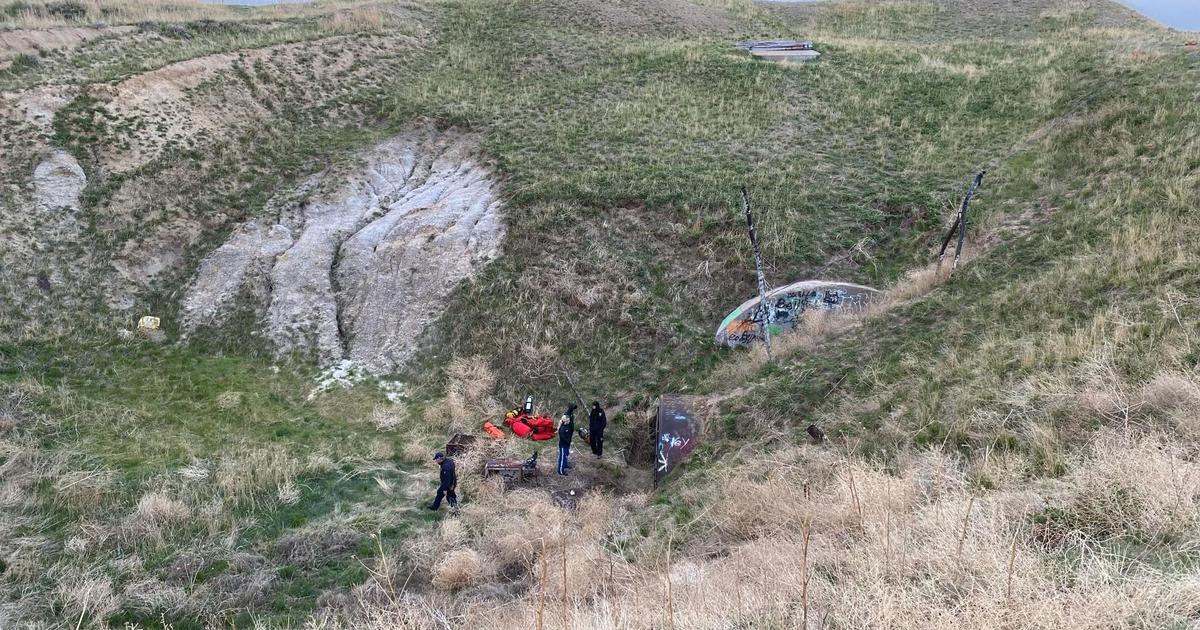New data: 151 high threat level students currently in Denver Public Schools
For the first time, CBS News Colorado has found how many students in Denver Public Schools have been deemed a threat to others.
Since a shooting at East High School involving a student who was on a safety plan -- officially called an action intervention plan -- CBS News Colorado has been asking the district how many students in Denver Public Schools are on these kinds of plans.
The district says it doesn't track the number of students on safety plans, but CBS News Colorado discovered the district does track how many students have had threat assessments, which is the process that often leads to a student being put on a safety plan, which could involve something as drastic as a pat-down search every day before school.
Officials say the student, who shot and injured two deans at East High School, was subject to a pat down search every day as part of his action intervention plan.
CBS News Colorado learned through an open records request that just in this school year so far, staff has conducted threat assessments on 361 students in the district and 68 of those students were deemed a "high" threat level.
Also this year, 60 students had a threat level not reported, 110 were labeled as a "low" threat level, 26 were labeled a "low/medium" threat level, 84 were deemed a "medium" threat level, and 13 were designated a "medium/high" threat level.
According to DPS training documents on threat levels, a student threat that is a "high" level of concern is classified by the following characteristics:
- Threat is specific and plausible
- There is an identified target
- Student has the capacity to act on the threat
- Information suggests concrete steps have been taken toward acting on threat
- Information suggests strong concern about the student's potential to act violently.
Of the students currently enrolled in DPS, 1,023 have been assessed for threats at some point during their time on campus, while 151 of those students were labeled a "high" threat level.
The data shows of the students, who have ever had a threat assessment in DPS, 196 had a level not reported, 303 had a "low" threat level, 60 had a "low/medium" threat level, one was a "low/high" threat level, 274 had a "medium" threat level, and 38 had a "medium/high" threat level.
It is important to note, these numbers encompass only threats to others, not suicidal threat concerns.
Teachers tell CBS News Colorado a threat assessment can be conducted on a student even if something concerning occurred off campus, like a social media post of a student holding a firearm for example.
Staff at other schools also say that a large team of people at the student's school are often involved in conducting the threat assessments, including the child's parents, teachers, counselors, principals, social workers, and security guards.
Parents like Bryan Clark, who has two children in DPS, including East High School, said while the numbers seem low, given the overall student population, even just 68 students deemed a high threat level this year is concerning.
"I don't think it's acceptable," Clark said. "I think it's a breakdown above and beyond DPS. There's a lot going on in society that's causing these issues to occur, but if that means a student has known access to a gun or is considered a threat in a violent manner that would be of that level, I mean, I think that there should be some alternative means to get them their education or at least until there's some form of rehabilitation, that we can reduce that threat."
The district says there aren't alternative schools for particularly dangerous students.
"By law, we're required to provide access to education, and with good faith and ethical guidelines, we're required to promote a safe and welcoming environment. I think both can be done regardless of what potential risks might be presenting in most cases," said Dr. Jane Lineman, the student safety coordinator with DPS. "I'm not aware of any schools that are coined as alternative schools. Through the choice process, we have our district-managed schools, we have charter schools, we have innovation schools, we have pathway schools. Depending on the programming offered by those schools, I think it depends on what a student's needs are. I don't think there's necessarily a criteria based on a particular behavior that might be identified as being at risk."
She also noted the percentage of students considered a risk to others is low.
"I think for a district that has approximately 90,000 students, I think that's a good percentage. It's very low when you actually calculate that probability that someone's going to go through that process," Lineman said. "It also reflects the really good work that we do as a district and that anytime we become aware that a student might be posing a threat, making a threat or escalating in a violent manner, we're able to identify and respond in a very effective way. So those numbers don't necessarily make me cautious or worrisome."
Lineman added that resources for students who are threat-assessed can vary on a case-by-case basis.
"I think it's important to name that every case is different and every student's needs are different and the perception of what high might be might be different based on one perception or the other," Lineman said. "One of the things that I really appreciate about our process is not only does it identify and assess that potential concern, it moves forth with supportive measures that hopefully are going to help a child return back to learning in a very safe and supportive way, while also ensuring they're safe."
She says students can receive mental health interventions or daily check-ins and check-outs.
"Other examples that might go into that plan is a structured arrival or dismissal process, so making sure that children are welcomed into our buildings are able to navigate that instructional day and then also are able to leave that building in a very safe and supportive way," Lineman said. "In addition, in some cases, you might have a search of their physical belongings, depending on what the potential risk is... we also look at students' specific intervention. So, identifying trusted adults might be one-on-one therapeutic services. There might be referrals for small groups, could be a substance abuse prevention program that someone might need, could be access to gain reduction efforts related to that could also just be navigating coping skills, how to access your toolkit of good strengths, so knowing how to show up how to access trusted adults whenever they need breathing techniques. Maybe it's journaling, maybe it's breaks during the instructional day, but really making sure a child feels welcomed and safe."
But parents, like Clark, say they would like to see more transparency from DPS about threats and discipline response in the school system.
"As a parent, I have no visibility. I have no information as to you know, how threats are handled and when they occur, or how they're reported," Clark said. "I think there's a lot of steps that DPS can take to increase transparency to let people know what's going on."
He says it's hard to believe how low the numbers are.
"I mean, I went to school, kids are kids, they're going to get into fights. They're going to lash out. They should be assessed, and probably mostly fallen to a low or not even reported level, but they still need to be assessed," Clark expressed. "To me, if that's what is making up these numbers, that any threat is being assessed, I don't see this as being even plausible."







